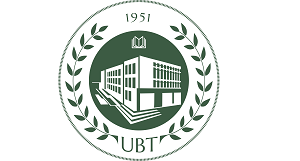1Department of Agro-Environment and Ecology, Faculty of Agriculture and Environment, Agriculture University of Tirana, St. “Paskal Vodica”, Kodër-Kamëz, Tirana, Albania.
*Corresponding author e-mail: pjetrieva@yahoo.com
Abstract:
The biological reserves of the Ohrid Lake which is one of the largest in Europe, include many endemic flora and fauna species. Because of its unique ecosystem, the lake was declared a UNESCO World Cultural and Natural Heritage Site in 1980, and “Cross-boundary Biosphere Reserve” in 2014. The lake is also of a cultural reserve importance for both countries Albania and Macedonia as a tourist destination. But the lake’s ecosystem has been under an increasing threat due to different sources of pollution including agricultural and industrial chemicals. The objective of this thesis was to assess the status of this ecosystem, conducting qualitative and quantitative survey in order to conserve and protect the biodiversity of Ohrid Lake and other challenges that consist on a better co-operation between Albania and Macedonia concerning the environmental management of the watershed. However, it was noticed that the conservation could only be done through a joint program involving both countries. Emphasis was appropriately put on the establishments of joint agreements, legislation and institutional structures for a bilateral management as far as different issues are concerned.This extract presents the preliminary results on a piloting area in lake Ohrid and its catchment areas, in order to compare results through the years and set a database of the ecosystem pollution trend. Also, this thesis presents all the “actors” of the region who are kept responsible for the management of this ecosystem; the relevant policies and the legal framework concerning the lake monitoring program, the institutional structure and the data collecting processes. Another important scope was to raise awareness by informing and involving the public and all stakeholders on the economic development and the conservation as well. Performance indicators have partially provided a basis to measure the progress and the project outcome, by establishing a water resource management framework both analytically and institutionally, well-defined for the needs and the investment options. This challenges other donors to invest in Ohrid Lake basin and to create the possibility for further investment..
Keywords: Lake Ohrid; Watershed management; Biodiversity; Pollution.

